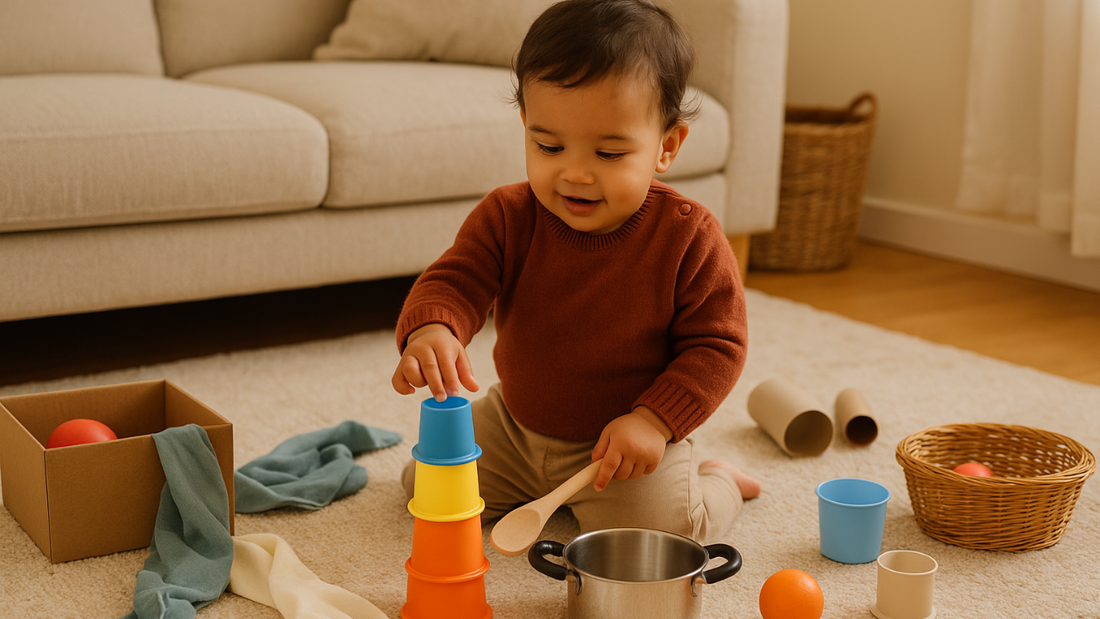
Everyday Objects as Toys: How to Turn Your Home Into a Play Zone
LiLLBUDThink about a world where your toddler's creativity and curiosity can grow without any toys you buy. Everyday things like wooden spoons, scarves, cardboard boxes, and cups can be used for play, learning, and discovery in many ways. With a little creativity and safe supervision, your home can become a fun play area where everything becomes a tool for learning, exploring, and having fun.
Why Everyday Play Matters
Play doesn't have to be expensive or come in a box. Things you use every day around the house can give you endless chances to use your imagination, solve problems, and learn new skills. Toddlers learn by playing with everyday things:
- Be creative and find new ways to do things
- Improve both fine and gross motor skills
- Learn how things are connected to each other
- Gain confidence and independence
Start with Simple, Safe Items
With a little imagination, almost anything in the house can be a toy:
- Kitchen items: pots, wooden spoons, plastic cups, and mixing bowls.
- Textiles: Include pillowcases, dish towels, small blankets, and scarves.
- Containers: Boxes made of cardboard, paper tubes, and small baskets.
- Items from nature: pinecones, smooth stones, and leaves (with adult supervision).
Tip for Parents: Keep your kids away from sharp, small, or poisonous things. Supervision is very important, especially for toddlers who like to put things in their mouths.
How to Turn Everyday Objects Into Play
- Stack, Sort, and Build: Use cups, boxes, and containers to practice sorting, stacking, or nesting by size or color. This helps with problem-solving, spatial awareness, and hand-eye coordination.
- Role-Play and Use Your Imagination: Wooden spoons turn into magic wands, cardboard boxes turn into spaceships, and scarves turn into tunnels or capes. Helps kids learn how to think creatively, tell stories, and play roles.
- Cause and effect experiments: Put water between cups, drop balls into containers, or shake containers with rice or beans in them. Safe experimentation helps toddlers learn about cause and effect, making predictions, and observing things.
- Sensory Exploration: Smooth stones, crinkly paper, and soft fabrics are all things that make you want to explore your senses. Touching, squishing, shaking, and rolling things helps kids learn how to use their hands and feel things.
- Rhythm and Music: You can use pots, pans, wooden spoons, or jars with rice as drums and shakers. Helps with rhythm, coordination, and hearing development.
Helpful Tips:
- Change up the things you play with to keep it fun and new.
- Keep an eye on it, especially with toddlers who are exploring textures and mouths.
- Don't try to make everything perfect; instead, let toddlers lead the play.
- Count, talk about textures, or talk through actions while you play to make learning a part of everyday life.
Things You Shouldn't Do:
- Making the play too hard: Simple things are often more interesting.
- Always stepping in: Let kids try things out and find out for themselves.
- Limiting play to "toys only": Things we use every day can be just as good for learning and being creative.
There are so many fun things to do at home. Toddlers can have hours of fun, learning, and exploring with everyday things if they use their imaginations, get some help, and are watched over safely. As a parent, ask yourself, "What things in my house can make me curious today?" OR "How can I watch and support creativity without getting in the way?"
You can turn your home into a fun and interactive play area by seeing the potential in everyday things. This makes every day an opportunity for growth and happiness.

